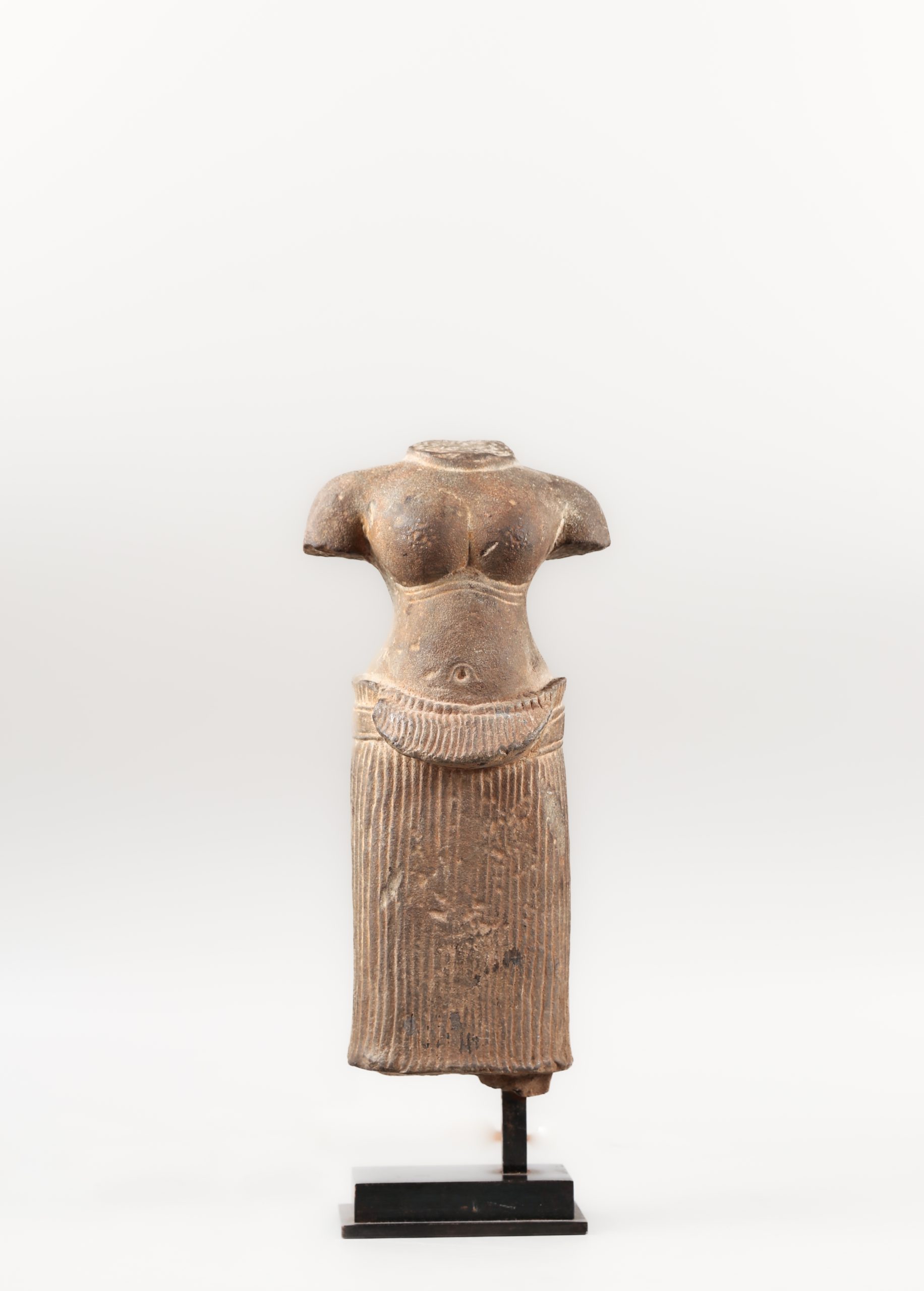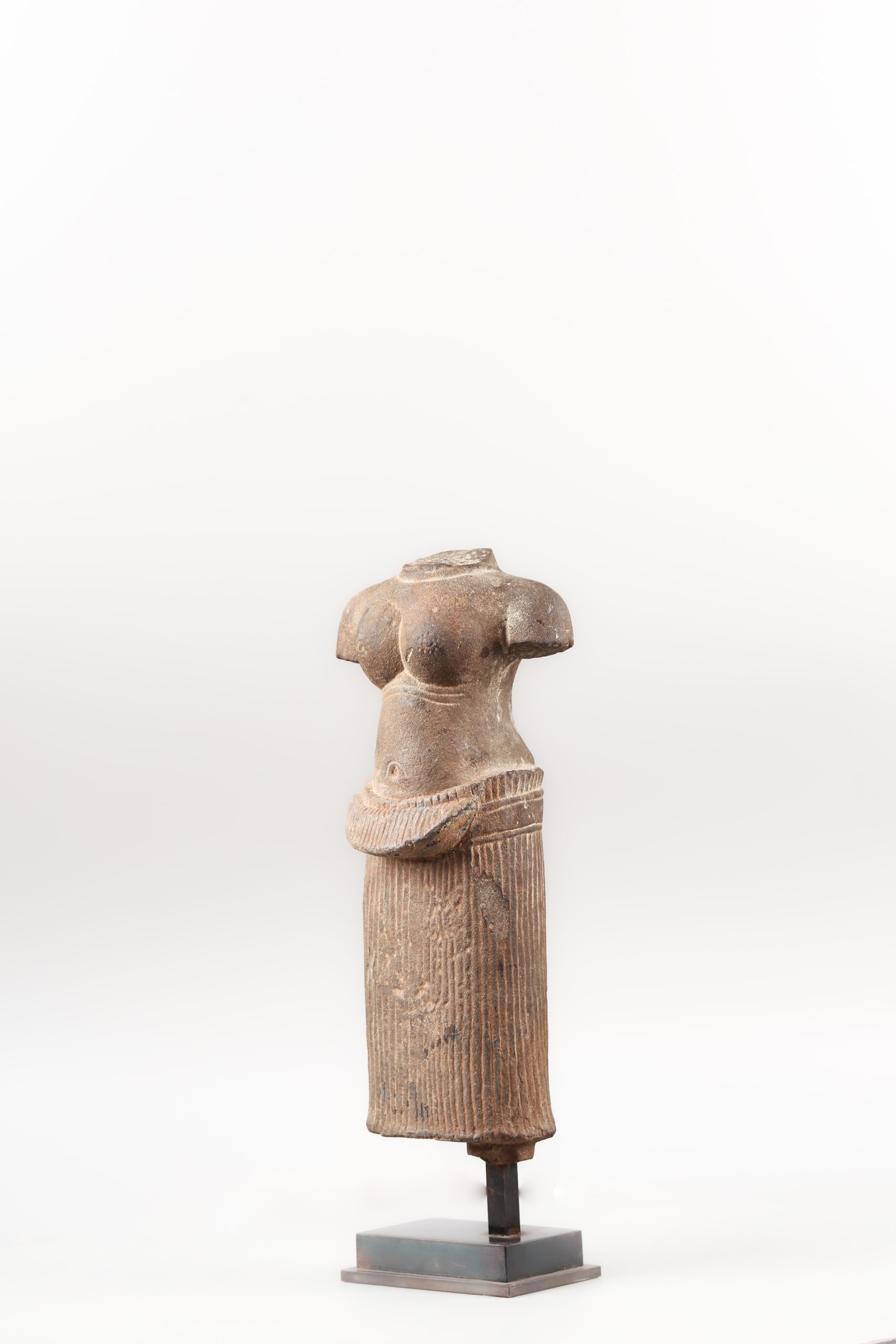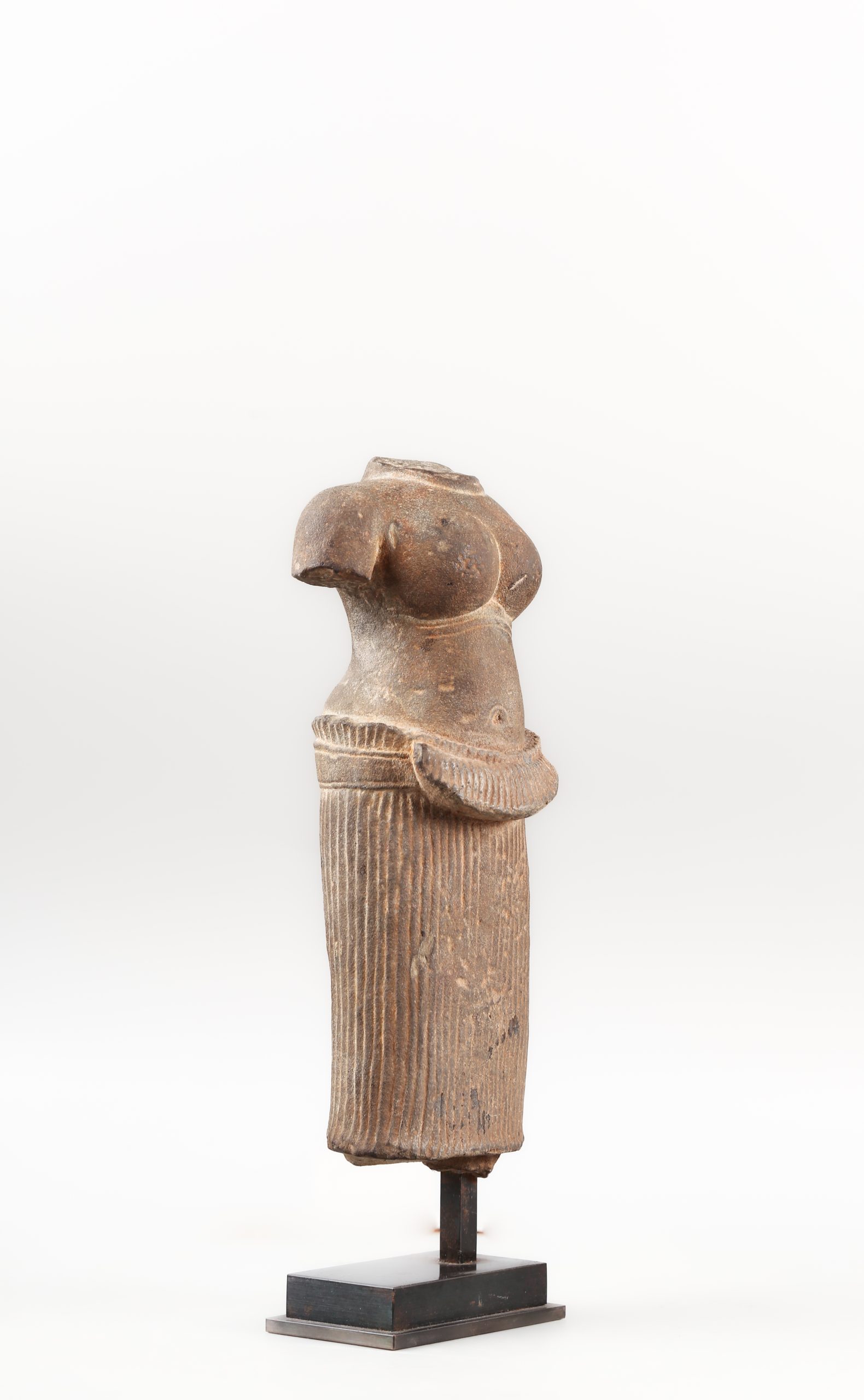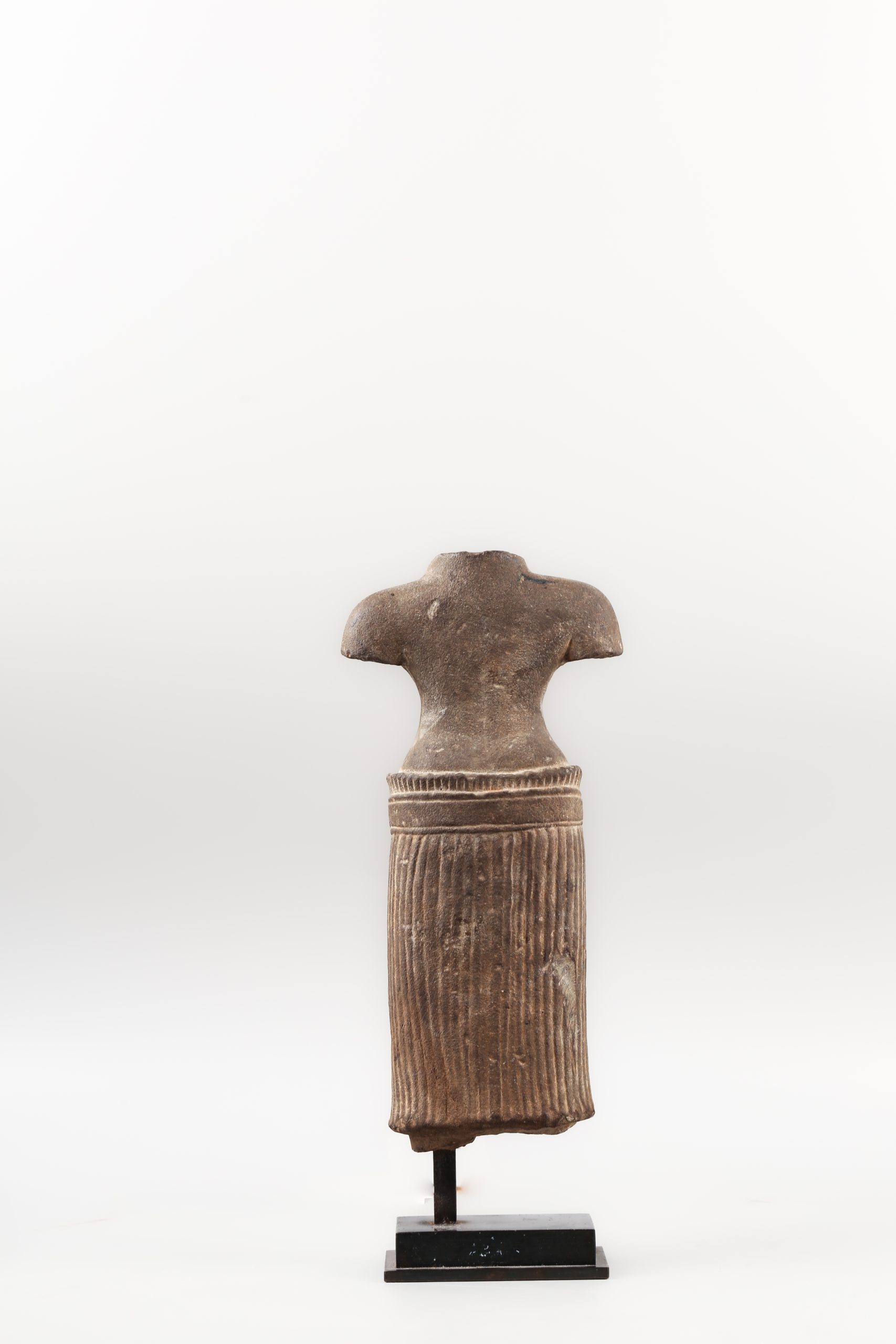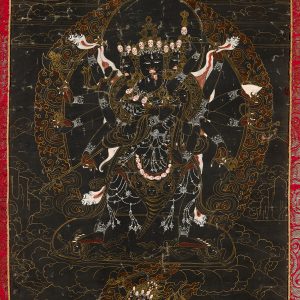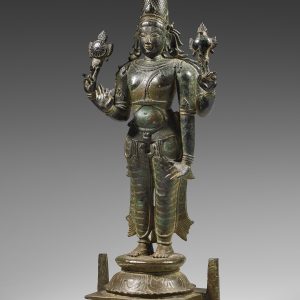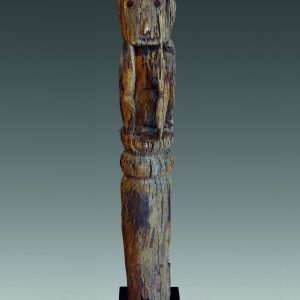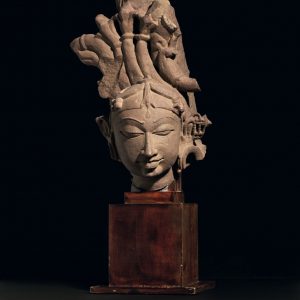Bust of female deity
Sandstone
Cambodia
10th century, Koh Ker school
H. 27 cm
Description
The feminine ideal in the Angkorian period
This statue represents a female divinity, who could be identified as the goddess Uma.
Viewed from the front, this sculpture is in keeping with the traditional codes of Khmer art. Depicted bare-chested and wearing a sampot covering her legs, the powerful, generous forms characteristic of the Koh Ker school are combined with the hieratic rigour typical of Khmer art. This particular aesthetic is underlined by the highly geometric drape of the garment, which is made up of subtly incised folds.
Khmer art, unique from the outset, has retained over the centuries the iconographic codes and modes of representation established at its inception. Originally, the sculptures were polychrome. They were adorned with garments and jewels for religious purposes.
Among the original features of Khmer art to be found on this sculpture are the incisions under the goddess’s breast, which are systematic but whose shape has evolved over the centuries. This detail also emphasises the volumes of the goddess’s slender figure. In the same way, the pocket of the garment – folded under the belly – is a fundamental element of Khmer representations.
Like this sculpture, all Khmer works are carved in sandstone, a stone that is abundant in the country. This material allows sculptors to play with the modelling of flesh and polishing, and its high density allows for the refinement of details.
The Visnuite cult in Cambodia
Influenced by India, the Khmers adopted not only their main religions – Buddhism and Hinduism – but also other cultural aspects, notably writing in Sanskrit. Hindu until the 16th century, the Khmer rulers erected numerous temples on the Angkor site, before making Mahayana Buddhism the state religion.
This sculpture can be identified as the goddess Uma, also known as Parvati. A goddess of Siva, she is one of the main goddesses of Hinduism, and is given particular importance in the Sivaite cult, which spread throughout Cambodia during the medieval period.
The sensuality of the goddess’s forms can be seen here, where the hieratic style appears less severe than in earlier periods.
Provenance: Former Bernard Buffet collection, before 1980, then Galerie Barrère.

